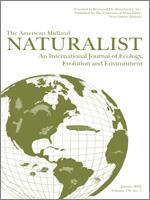Partridge pea (Chamaecrista fasciculata) is a common annual legume that has many important uses for humans and wildlife. During the growing season, partridge pea produces numerous flowers that are visited by many bee and wasp species. However, which bees/wasps act as the principle pollinators of partridge pea has not been explored thoroughly. We used mesh cages with different hole sizes (2.5, 0.64, 0.32, and 0.16 cm2) to screen out different sized pollinators and collected data on pod length, seed number, and percentage of pods formed per flower number (pod set). We also collected partridge pea flower insect visitors and estimated pollen loads on their bodies to determine the amount of pollen available for pollination services. Overall, partridge peas in cages with larger holes produced longer pods and more seeds compared to those in cages with smaller holes. However, no significant difference in pod set was observed among plants grown in the various size cages. Thirteen flower visitors were observed to visit open partridge pea flowers. The most common insect visitors were Bombus spp., Agapostemon splendens, and Apis mellifera. Apis mellifera contained significantly less pollen on its body compared to that on all other common bees. Likely pollinators of partridge pea in Florida are larger bees such as Xylocopa and Bombus and possibly Agapostemon splendens, a smaller halictid bee.
How to translate text using browser tools
1 January 2018
Bee Contribution to Partridge Pea (Chamaecrista fasciculata) Pollination in Florida
Joshua W. Campbell,
John H. Irvin,
James D. Ellis
ACCESS THE FULL ARTICLE
It is not available for individual sale.
This article is only available to subscribers.
It is not available for individual sale.
It is not available for individual sale.





